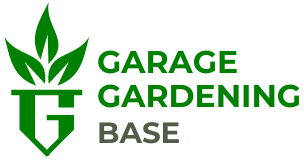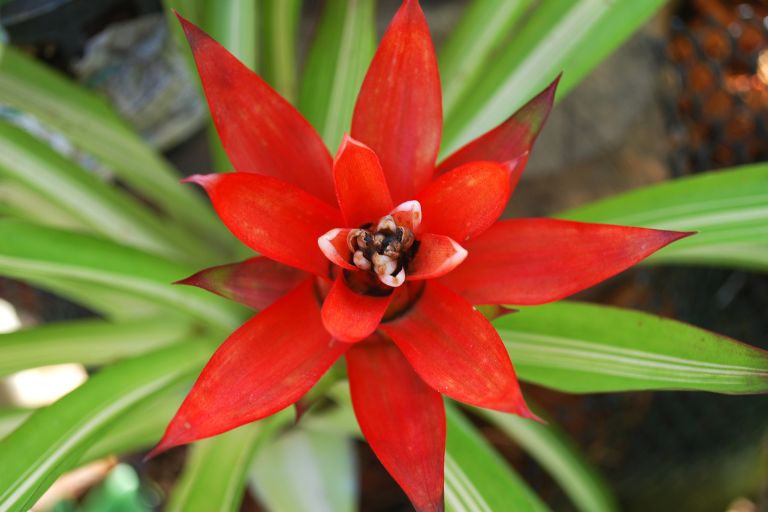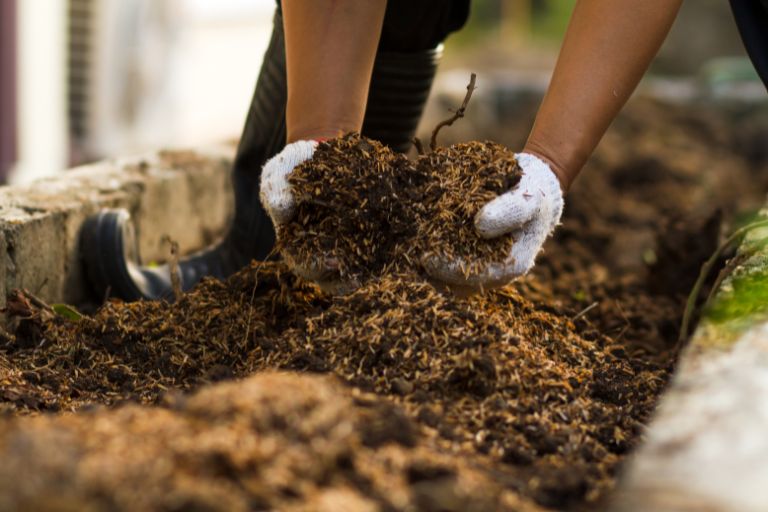Cultivating Tranquillity: Bonsai Gardening in Garages
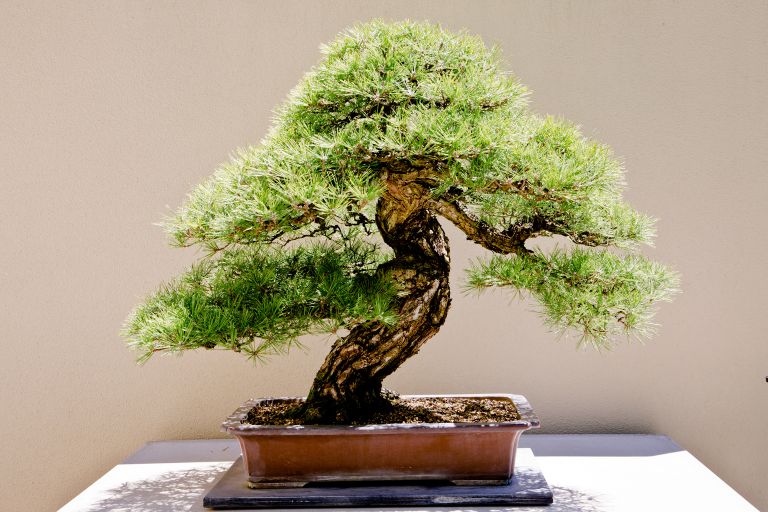
In the heart of bustling cities, where the hustle and bustle of modern life often drown out the whisper of nature, a quiet revolution is taking root. In the unassuming confines of garages, an ancient art form is finding new life – bonsai gardening. As space becomes a luxury and greenery a rarity, people are turning to this ancient practice as a means of reconnecting with nature and fostering inner peace.
In this article, we delve into the enchanting world of garage bonsai gardening. From the challenges of limited space and lighting to the therapeutic benefits and creative expression it offers, we explore how this centuries-old tradition thrives amidst urban chaos. Join us as we uncover the secrets of cultivating miniature landscapes and cultivating tranquillity in the most unexpected of places.
Understanding Bonsai
Origins – Bonsai gardening, which originated in China over a thousand years ago, is an art form that involves growing miniature trees in containers. It later gained popularity in Japan, where it evolved into the refined practice we know today. Initially, bonsai trees were grown for their symbolic and spiritual significance, representing harmony, balance and longevity.
Cultural significance – Bonsai has deep cultural significance in both Chinese and Japanese traditions. In China, miniature landscapes known as “penjing” were created to mimic natural landscapes, while in Japan, bonsai became synonymous with Zen Buddhism and the pursuit of enlightenment. Bonsai trees are revered for their symbolism and are often associated with qualities such as resilience, wisdom and humility.
Basic techniques – Bonsai gardening involves meticulous techniques to control the growth and appearance of trees, ultimately creating the illusion of mature, full-sized trees in miniature form. Key techniques include:
Pruning – Regular pruning is essential to maintain the desired shape and size of the bonsai tree, as well as to encourage branching and foliage density.
Wiring – Wiring is used to bend and shape branches, allowing the gardener to create natural-looking curves and contours that mimic the appearance of mature trees.
Repotting – Bonsai trees require regular repotting to refresh the soil, prevent root-bound growth and maintain overall health. Repotting also provides an opportunity to adjust the position of the tree within the container.
Watering and feeding – Proper watering and fertilising are essential for the maintenance of bonsai trees. Careful attention must be paid to the specific water and nutrient requirements of each tree species.
Bonsai gardening offers practitioners a unique blend of meditative tranquillity and creative expression. The process of caring for bonsai trees requires patience, mindfulness, and attention to detail, making it an inherently calming and therapeutic activity. Additionally, shaping and styling bonsai trees allows gardeners to exercise their artistic sensibilities, creating miniature landscapes that reflect their personal aesthetic and vision. Bonsai gardening thus serves as a means of connecting with nature, fostering inner peace, and expressing one’s creativity in a harmonious and contemplative manner.
Garage Gardening Challenges
Gardening in a garage presents several unique challenges that can affect the growing of bonsai trees. These challenges include limited natural light, temperature fluctuations and space constraints. Each of these factors can affect bonsai cultivation in different ways.
Limited natural light
Impact on Bonsai – Bonsai trees typically require ample sunlight to thrive and maintain their health and vigour. Insufficient light can result in stunted growth, sparse foliage and weakened overall resistance.
Possible solutions
Install artificial lighting – Supplement natural light with grow lights or full-spectrum LED bulbs to provide the spectrum of light needed for optimal bonsai growth.
Position bonsai strategically – Place bonsai trees near windows or skylights where they can receive the maximum amount of natural light.
Rotate bonsai regularly – Rotate bonsai trees regularly to ensure even exposure to light and to prevent uneven growth patterns.
Temperature fluctuations
Impact on Bonsai – Temperature fluctuations in a garage environment can stress bonsai trees, affecting their growth cycles, metabolic processes and overall health. Extreme temperatures can also cause damage to delicate foliage and roots.
Possible solutions
Insulate the garage – Improve insulation by sealing cracks, adding weather stripping to doors, and installing insulation panels to regulate indoor temperatures.
Use air conditioning – Use space heaters, fans or portable air conditioners to maintain consistent temperatures in the garage, especially during extreme weather.
Group bonsai together – Grouping bonsai trees together can create a microclimate within the garage, helping to regulate temperature and humidity levels more effectively.
Space constraints
Impact on Bonsai – Limited space in a garage can limit the number of bonsai trees that can be grown and the size of containers that can be used. It can also impede proper airflow and make maintenance difficult.
Possible solutions
Use vertical space – Use shelving, hanging racks or wall-mounted containers to maximise vertical space for bonsai cultivation.
Choose compact bonsai varieties – Choose bonsai varieties that have smaller growth habits and can thrive in smaller containers, taking up less space.
Use efficient storage solutions – Organise gardening tools, pots and supplies with space-saving storage solutions such as wall-mounted organisers or compact storage bins.
Optimise Garage Space
Some practical tips for transforming your garage into a bonsai gardening haven:
Lighting setup
Install grow lights – Choose full-spectrum LED grow lights or fluorescent bulbs designed for indoor gardening. Position the lights above the bonsai trees to mimic natural sunlight.
Adjust the light intensity – Use timers to regulate the duration and intensity of light exposure to provide bonsai trees with the optimal amount of light for growth.
Consider supplemental lighting – If natural light is limited, consider supplementing with additional lighting sources such as table lamps or adjustable spotlights to ensure even coverage.
Climate control measures
Insulation – Improve insulation by sealing gaps around windows and doors, and insulating walls and ceilings to regulate temperature and humidity levels.
Ventilation – Install exhaust fans or vents to improve airflow and prevent stagnant air, which can lead to the growth of mould and mildew.
Temperature regulation – Use space heaters or portable air conditioners to maintain consistent temperatures in the garage to ensure that bonsai trees are not exposed to extreme heat or cold.
Space-saving techniques
Vertical gardening – Utilise vertical space by installing shelves, racks or hanging systems to maximise the area available for bonsai cultivation.
Compact storage solutions – Opt for compact gardening tools and storage containers to minimise clutter and maximise space efficiency.
Mobile workstations – Create portable workstations with trolleys or tables that can be easily moved around the shed for potting, pruning and other maintenance tasks.
Humidity control
Humidity trays – Place water-filled humidity trays underneath bonsai trees to increase humidity levels and prevent foliage from drying out.
Misting – Regularly mist bonsai trees with water to maintain humidity levels, especially during dry periods or when using artificial heating.
Organisation and maintenance
Storage systems – Invest in storage systems such as cabinets, shelves and pegboards to keep gardening tools, pots and supplies organised and easily accessible.
Regular maintenance – Establish a routine for watering, fertilising, pruning and repotting bonsai trees to ensure their health and vitality.
Clean – Keep the garage clean and free of debris to prevent pests and diseases from affecting bonsai trees.
Personal comfort
Seating Area – Create a comfortable seating area where you can relax and enjoy your bonsai garden, complete with cushions or chairs.
Ambience – Enhance the ambience with decorative elements such as artwork, bonsai display stands and ambient lighting to create a serene and inviting space.
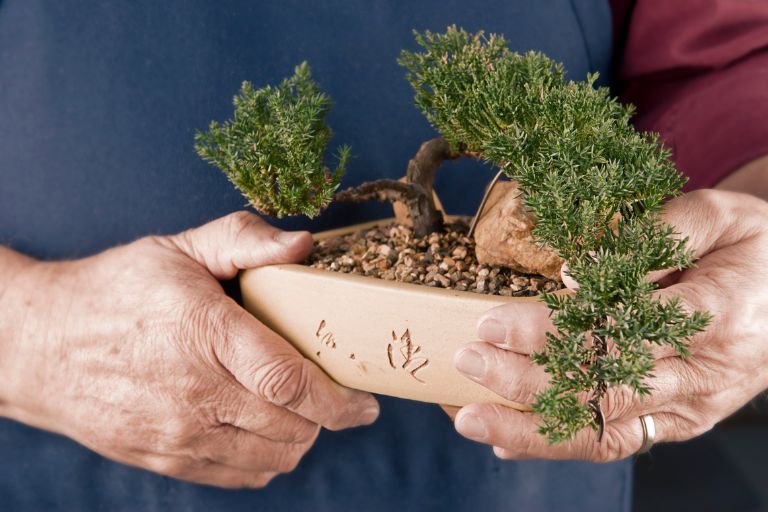
Suitable Bonsai Species
When selecting bonsai varieties for indoor and garage gardening conditions, it’s important to consider several factors to ensure their success and longevity. The following is a list of some bonsai species that thrive indoors and are well suited to garage gardening conditions, along with factors to consider:
Ficus (Ficus spp.)
Size – Ficus bonsai come in a variety of sizes, from small to medium, making them suitable for both small and large garage spaces.
Light requirements – Ficus bonsai prefer bright, indirect light but can tolerate lower light levels. They adapt well to artificial lighting, making them ideal for garage environments with limited natural light.
Maintenance requirements – Ficus bonsai are relatively easy to care for, requiring regular watering, occasional pruning and repotting every few years.
Jade (Crassula ovata)
Size – Jade bonsai are typically small to medium in size, making them suitable for garage gardening in containers.
Light requirements – Jades thrive in bright light but can tolerate partial shade. They are well suited to garage environments with plenty of natural or artificial light.
Care requirements – Jades are drought tolerant and do not need much watering. They benefit from occasional pruning to maintain their shape and size.
Chinese Elm (Ulmus parvifolia)
Size – Chinese elm bonsai come in a range of sizes from small to medium, making them adaptable to different garage garden spaces.
Light requirements – Chinese Elm bonsai prefer bright, indirect light but can tolerate lower light conditions. They thrive indoors and adapt well to artificial lighting.
Maintenance requirements – Chinese Elm bonsai require regular watering, pruning to maintain shape and occasional repotting.
Hawaiian Umbrella Tree (Schefflera arboricola)
Size – Hawaiian umbrella tree bonsai are typically small to medium in size, making them suitable for indoor and garage gardening.
Light requirements – They prefer bright, indirect light but can tolerate lower light levels. They adapt well to artificial lighting, making them suitable for garage environments with limited natural light.
Care requirements – Hawaiian umbrella tree bonsai require regular watering, occasional pruning to maintain shape and repotting every few years.
Ginseng Ficus (Ficus retusa)
Size – Ginseng Ficus bonsai are typically small to medium in size, making them suitable for indoor and garage container gardening.
Light requirements – They prefer bright, indirect light but can tolerate lower light levels. They adapt well to artificial lighting, making them suitable for garage environments with limited natural light.
Care requirements – Ginseng Ficus bonsai require regular watering, occasional pruning to maintain shape and repotting every few years.
Caring for Garage Bonsai
The following is expert advice specifically tailored to bonsai care in a garage garden environment:
Watering schedules
Monitor moisture levels – Check the moisture level of the bonsai soil regularly, especially in a garage environment where temperature and humidity fluctuations can affect water absorption rates.
Adjust watering frequency – Adjust your watering schedule according to environmental conditions. In a garage environment, where temperatures may be more stable than outdoors, watering requirements may vary, but generally aim to keep the soil slightly moist but not waterlogged.
Use the soak and dry method – Water thoroughly until excess water drains from the bottom of the pot, then allow the soil to dry slightly before watering again. This will help prevent root rot while ensuring adequate hydration.
Soil selection
Choose a well-draining soil – Choose a well-draining bonsai potting mix made from materials such as akadama, pumice and lava rock. Well-drained soil promotes healthy root growth and prevents waterlogging, which is especially important in a garage environment where ventilation may be limited.
Consider soil amendments – Depending on the specific needs of your bonsai species, you may want to add organic matter such as compost or pine bark shavings to the soil mix to improve moisture retention or nutrient availability.
Pruning techniques
Regular maintenance pruning – Schedule regular maintenance pruning to maintain the desired shape and size of your bonsai trees. Remove dead or diseased branches and any growth that detracts from the overall aesthetic.
Use sharp tools – Invest in quality bonsai pruning tools, including concave cutters, branch cutters and scissors. Sharp tools ensure clean cuts, minimise damage to the tree and promote faster healing.
Practice directional pruning – Control the growth of your bonsai trees by strategically pruning branches to promote desired branching patterns and overall tree structure.
Pest Management
Monitor for pests – Regularly inspect your bonsai trees for signs of pests such as aphids, spider mites or scale insects, especially in a garage environment where pests may be more prevalent due to reduced natural predators.
Natural remedies – Consider using natural pest control methods such as neem oil spray, insecticidal soap, or introducing beneficial insects such as ladybugs to control pest populations without harming the bonsai or the environment.
Isolate infested trees – If you find a pest infestation, isolate the affected bonsai to prevent the pest from spreading to other plants in your collection. Treat infested trees immediately to minimise damage and ensure the health of your bonsai.
Therapeutic Benefits of Bonsai
Bonsai gardening offers a variety of mental health benefits, especially when practiced in the calm and controlled environment of a garage. This is how caring for bonsai trees in a garage environment can reduce stress, promote mindfulness and foster a deep connection with nature:
Stress reduction
Therapeutic activity – Engaging in the care and cultivation of bonsai trees provides a therapeutic outlet for stress reduction. The repetitive tasks involved in watering, pruning and shaping bonsai trees can help shift focus away from daily stressors and promote relaxation.
Natural tranquillity – The tranquil atmosphere of a garage can provide a peaceful escape from the hustle and bustle of everyday life. Working with bonsai trees in this tranquil environment allows individuals to relax and recharge, reducing stress levels and promoting a sense of calm.
Promoting mindfulness
Focused attention – Bonsai gardening promotes mindfulness by requiring practitioners to focus their attention fully on the present moment. The intricate tasks involved in caring for bonsai trees, such as pruning and wiring, require concentration and awareness of subtle details.
Connection with nature – As people immerse themselves in the process of caring for bonsai trees, they develop a deeper appreciation for the natural world. This connection with nature fosters mindfulness, grounding practitioners in the here and now and promoting a sense of inner peace.
A sense of achievement
Visible progress – Bonsai gardening offers tangible rewards as individuals witness the growth and development of their bonsai trees over time. Each new leaf, branch or refined silhouette represents progress and achievement, boosting self-esteem and instilling a sense of accomplishment.
Creative expression – Bonsai gardening provides an outlet for creative expression, allowing practitioners to exercise their artistic sensibilities through shaping and styling trees. The ability to create unique and aesthetically pleasing bonsai compositions fosters a sense of fulfilment and pride in one’s creative abilities.
Connection with nature
Proximity to greenery – Even within the confines of a garage, bonsai gardening brings people closer to nature. The presence of living greenery creates a calming and rejuvenating environment, promoting a sense of well-being and connection to the natural world.
Appreciation of life cycles – Bonsai gardening offers a unique perspective on the cycle of life as practitioners witness the seasonal changes and growth patterns of their bonsai trees. This awareness of the interconnectedness of all living things deepens an individual’s appreciation of the beauty and resilience of nature.
Practicing bonsai gardening in the tranquil setting of a garage provides numerous mental health benefits, including stress reduction, promotion of mindfulness, a sense of accomplishment and a deeper connection with nature. By immersing themselves in the care and cultivation of bonsai trees, individuals can experience profound emotional and psychological well-being, improving their overall quality of life.
Growing bonsai trees in the tranquil setting of a garage is more than just a horticultural hobby – it is a gateway to profound mental health benefits. Through the meticulous care and nurturing of these miniature trees, people find solace from the stresses of daily life, promote mindfulness and develop a deep connection with nature.
The therapeutic rhythm of caring for bonsai trees, combined with the tranquil atmosphere of the garage, creates a space for relaxation and rejuvenation. As practitioners immerse themselves in the art of bonsai gardening, they discover a sense of accomplishment in witnessing the growth and transformation of their trees, fostering a deep sense of pride and fulfilment.
Bonsai gardening also serves as a reminder of the beauty and resilience of the natural world. By cultivating these miniature landscapes, people gain a new appreciation for the interconnectedness of all living things and the cyclical rhythms of life.
In essence, bonsai gardening transcends mere cultivation – it becomes a journey of self-discovery, mindfulness and reverence for the beauty of nature. Within the confines of a garage, amidst the bustle of everyday life, bonsai trees stand as silent sentinels of tranquillity, offering sanctuary for the soul and nourishment for the spirit.
